Are you struggling with copyright infringement issues? It's a common challenge many creators face today, and knowing how to effectively communicate your concerns is essential. Crafting a solid letter template for copyright infringement notices can help you address the issue directly and professionally. Join us as we explore the key elements of an effective notice and provide practical tips to protect your creative work!
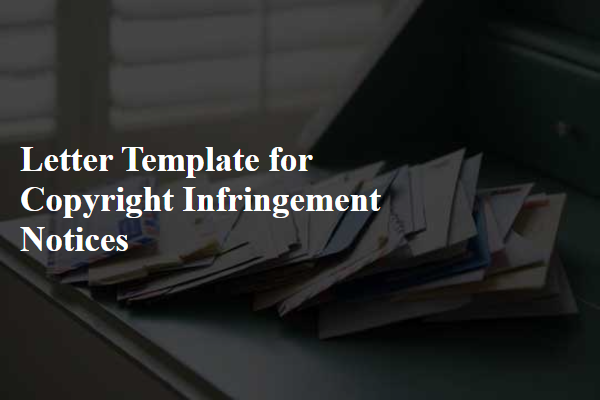
Identification of copyrighted work
A copyright infringement notice must clearly identify the copyrighted work involved, such as a specific book, song, or artwork. For instance, in the case of visual art, the notice should mention the title of the piece, the artist's name, publication date, and any registration number if applicable. In music, the notice could include the song title, artist's name, release year, and album title. Proper identification ensures clarity about the work being infringed upon, making the infringement easier to recognize and assess. Accurate details about the copyrighted work not only strengthen the case but also enhance the likelihood of a swift resolution.
Detailed description of infringement
Copyright infringement occurs when a protected work, such as a creative piece, software, or artwork, is used without authorization. This unauthorized use can include unauthorized reproduction, distribution, or display in various forms, particularly in digital formats. Infringement usually involves distribution across platforms like social media, streaming services, or websites, often leading to undue financial gain or exposure. Specific details may include the title of the work, the location and date of the infringement, as well as the URLs or platforms where the infringement occurred. Copyright holders may also provide evidence, such as screenshots or digital copies, to substantiate their claim. Legal consequences of these actions can lead to significant financial penalties and potential litigation, impacting both individuals and organizations involved.
Contact information of copyright owner
Copyright ownership information is critical for filing infringement notices. The copyright owner's name (the individual or organization holding the rights), the address (physical location or headquarters), and email (preferably a professional account for correspondence) should be accurately provided. This ensures that communication is streamlined and responses are managed effectively. Additionally, including a phone number can facilitate direct contact, allowing for quicker resolutions. The clarity of this information enhances the credibility of the notice, establishing the legitimacy of the copyright claim.
Request for removal or action
In cases of copyright infringement, it is essential to address the violation promptly. A copyright owner typically identifies the specific content, such as images, music, or written work, that is being misused without proper authorization. The notice should include crucial information like the URL link where the infringing material is located, along with a comprehensive description of the original copyrighted work. It is important to provide personal information, such as the copyright owner's name and contact details, to substantiate the claim. Additionally, a clear request for the removal of the content or action against the infringer must be articulated, emphasizing the legal implications of non-compliance, such as potential litigation under the Digital Millennium Copyright Act (DMCA). Finalizing the notice with a declaration of good faith belief regarding the infringement is essential to enhance credibility and facilitate the action process.
Legal and penalty warnings
Copyright infringement notices serve as formal communications regarding unauthorized use of copyrighted material, which can include literature, music, photographs, or software. The Digital Millennium Copyright Act (DMCA) outlines procedures for reporting such infringements. Entities like the U.S. Copyright Office define violations that typically incur penalties, which may include monetary damages or statutory damages up to $150,000. Legal actions often take place in federal courts, emphasizing the importance of clear documentation. Recipients are advised to cease unauthorized use immediately, with repeated offenses potentially leading to criminal charges. Compliance with copyright laws ensures protection of original creators and fosters a fair creative ecosystem.
Letter Template For Copyright Infringement Notices Samples
Letter template of copyright infringement communication for software piracy.
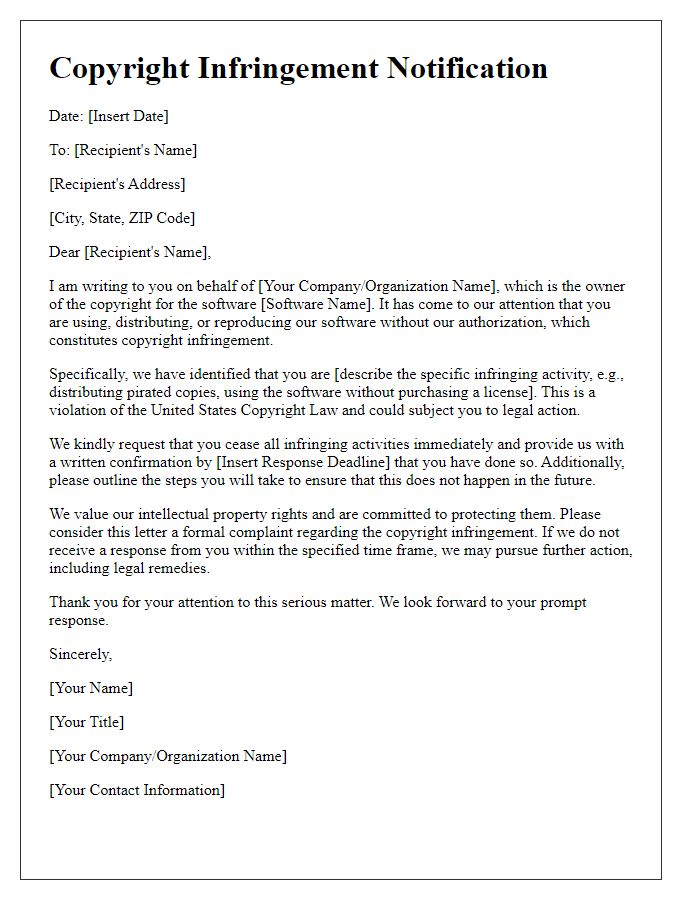
Letter template of copyright infringement request for educational materials.
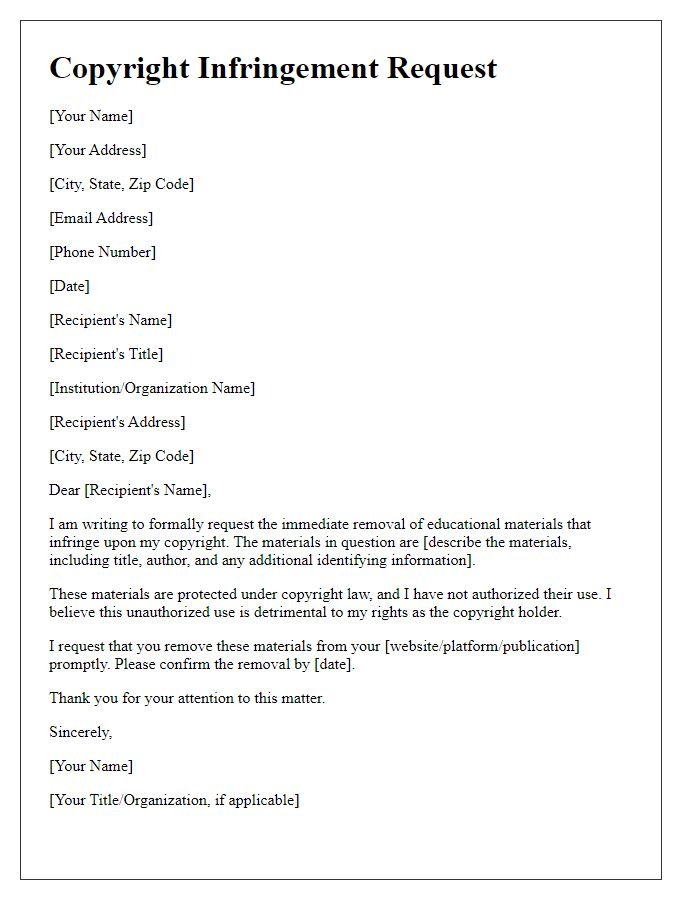
Letter template of copyright infringement cease and desist for branding elements.
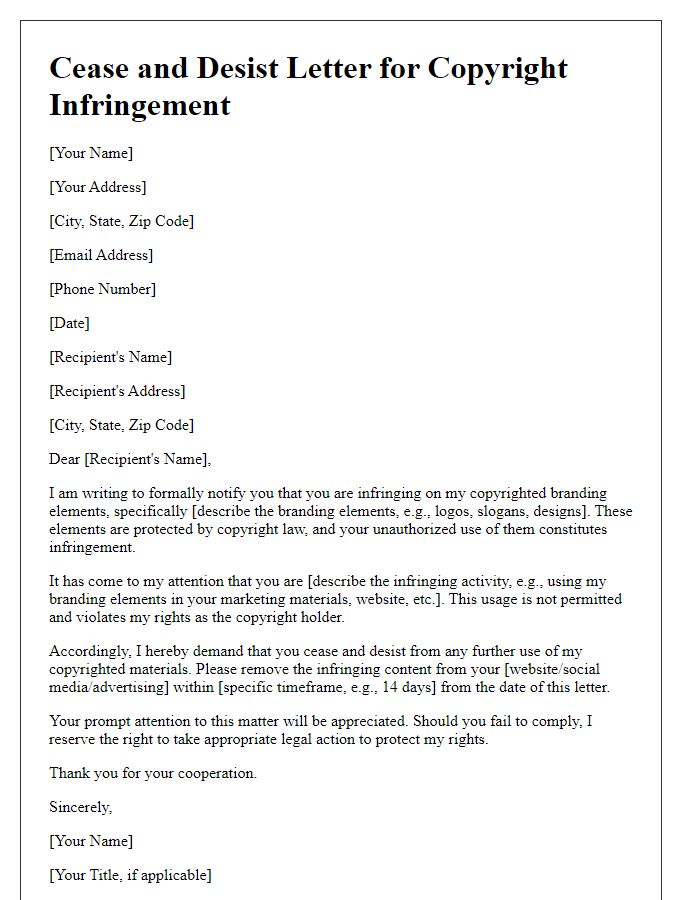

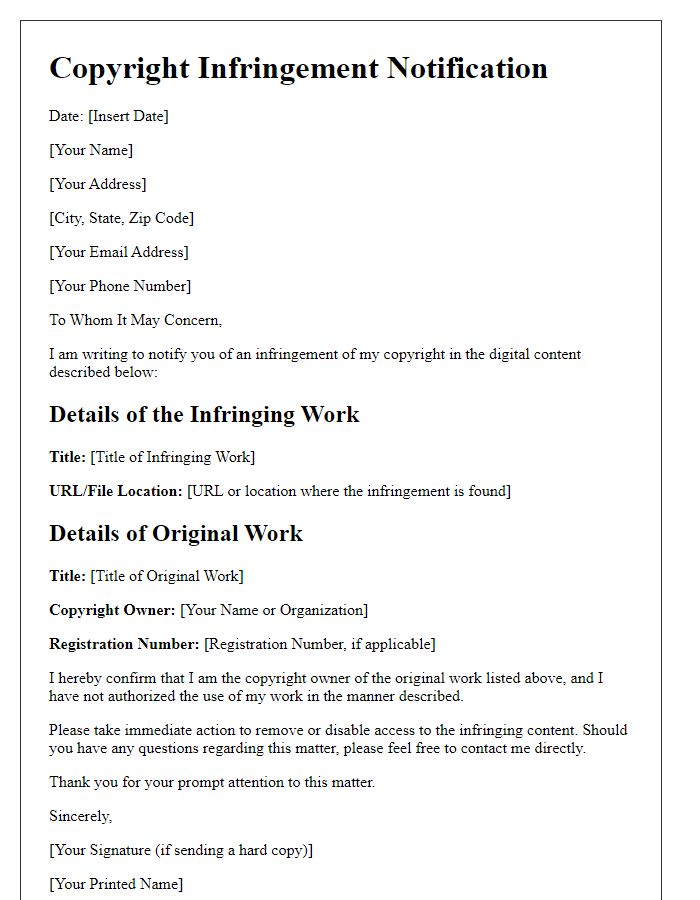
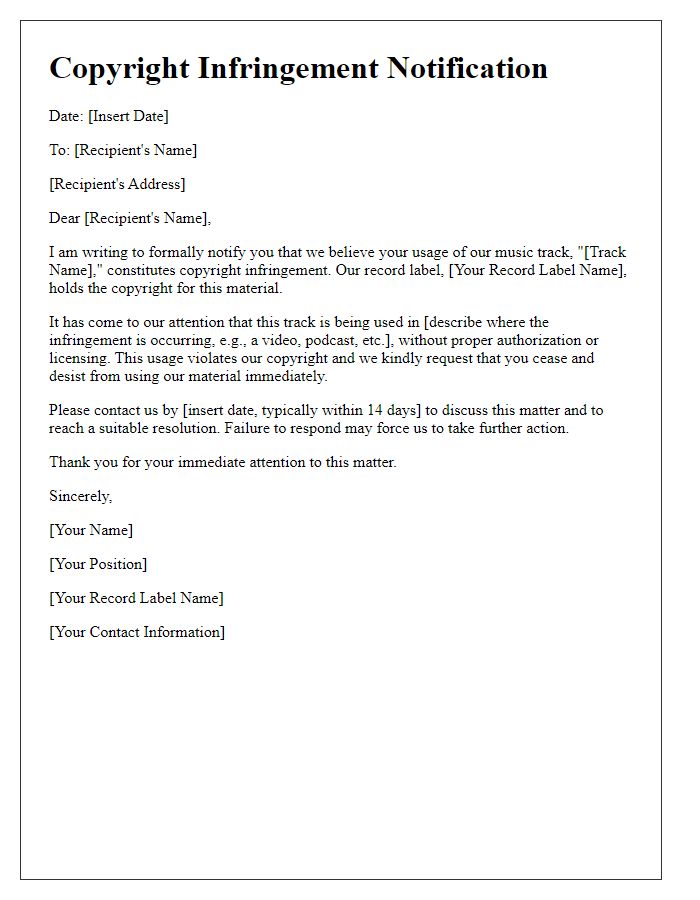
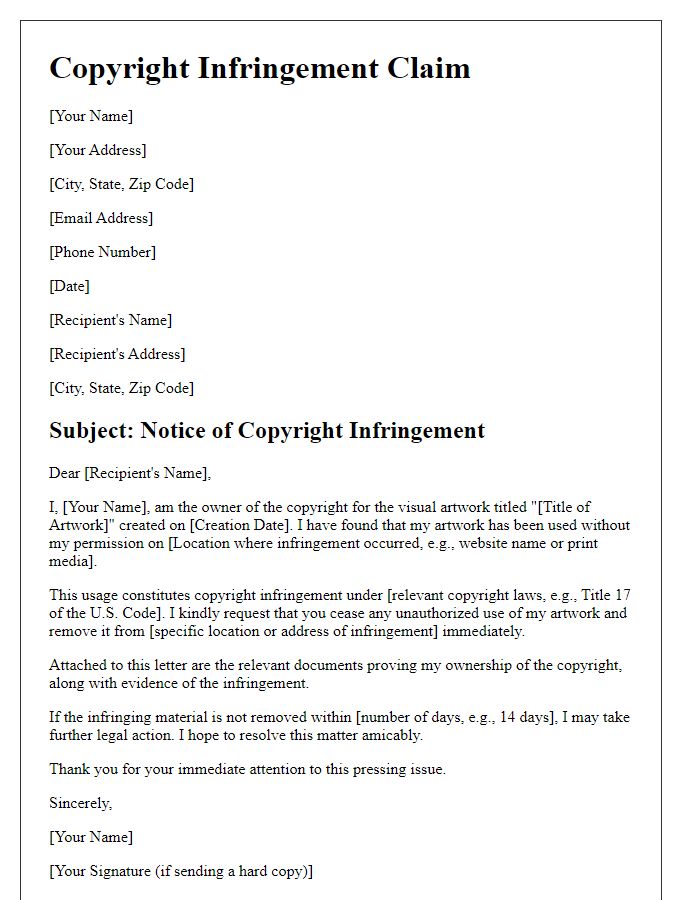
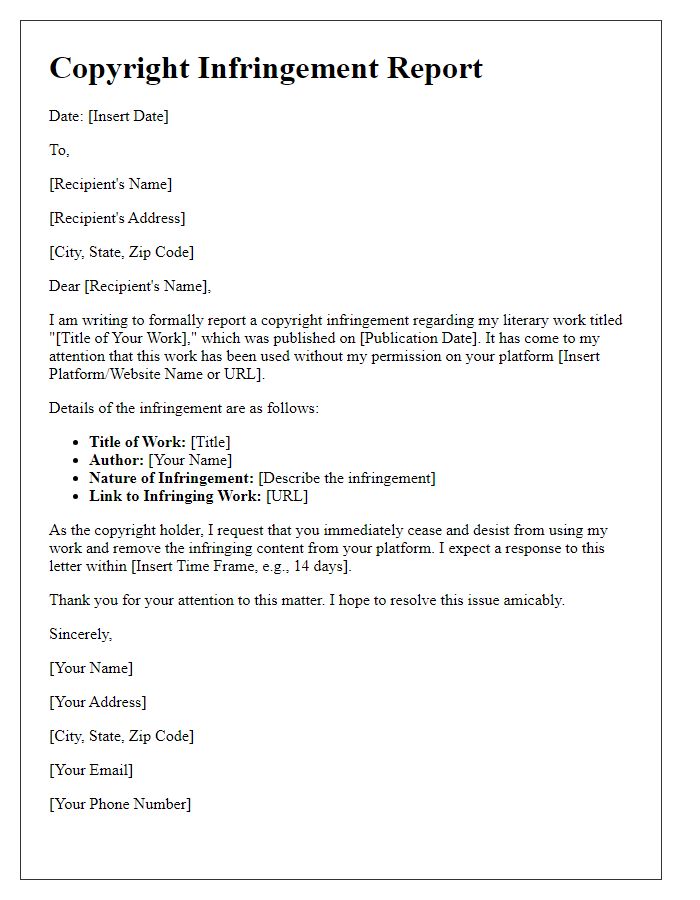
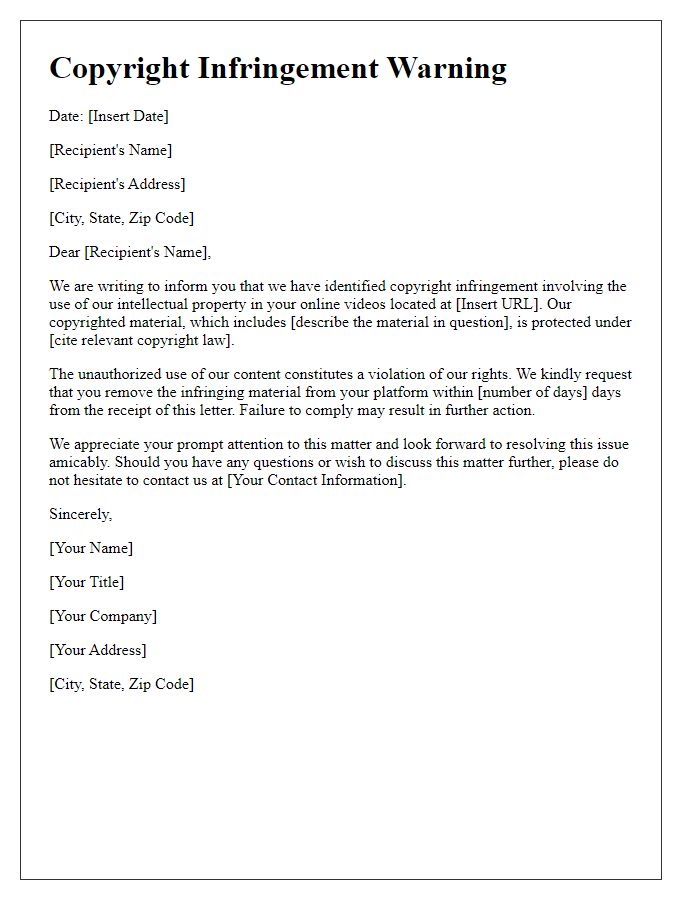
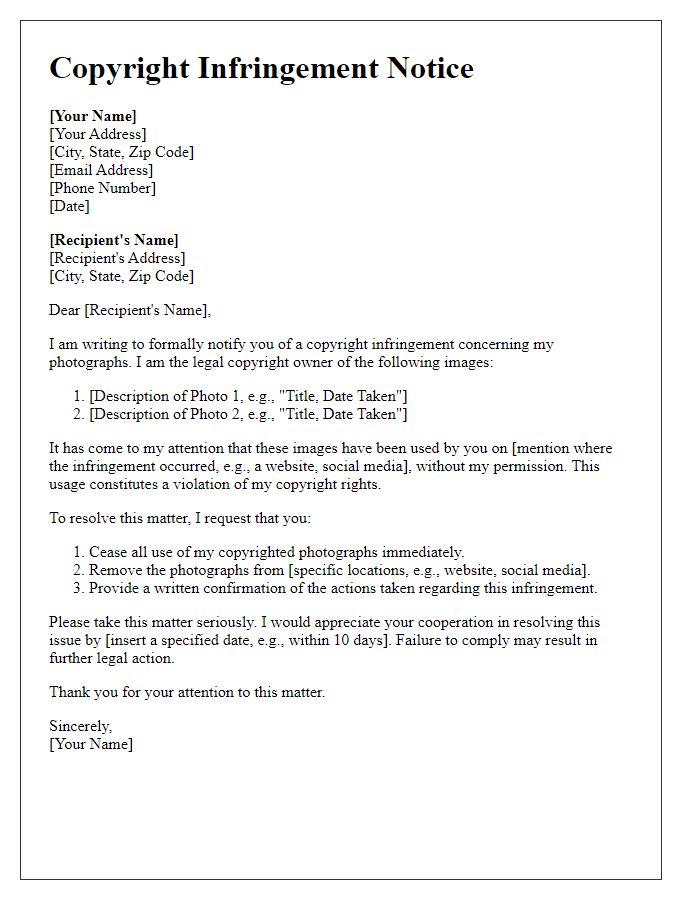
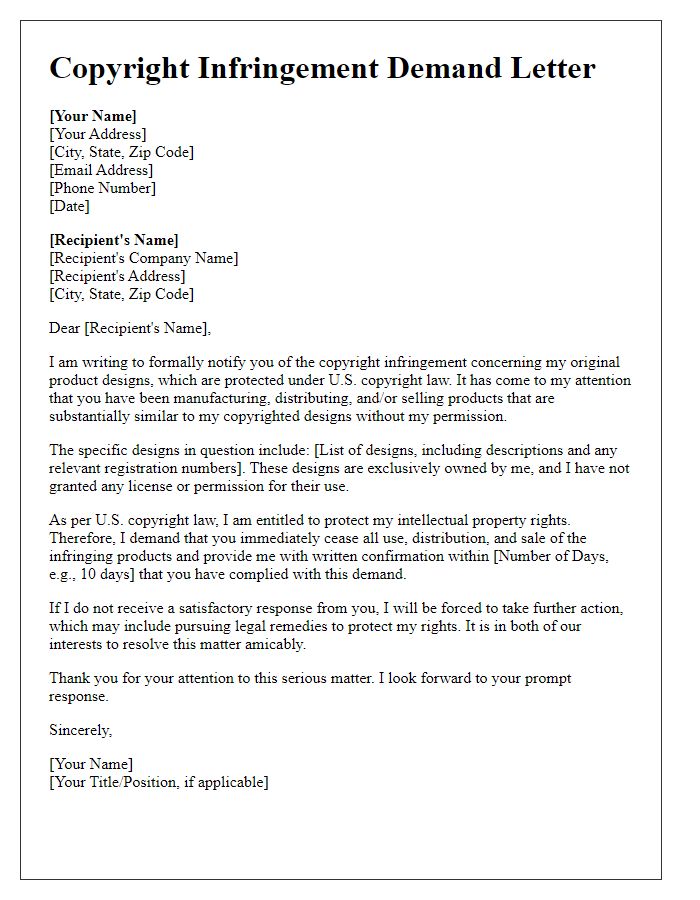

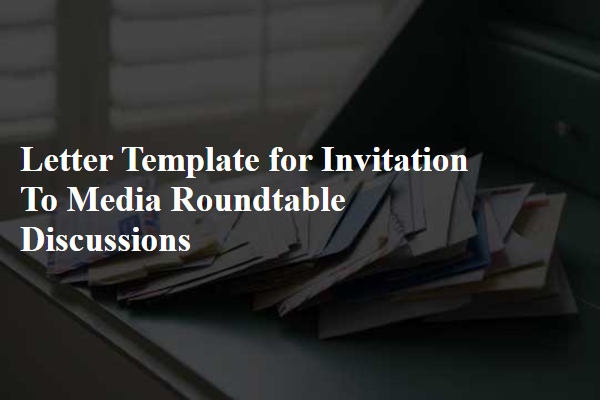
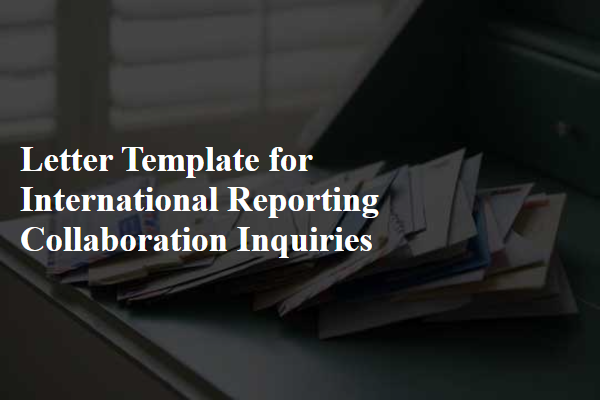
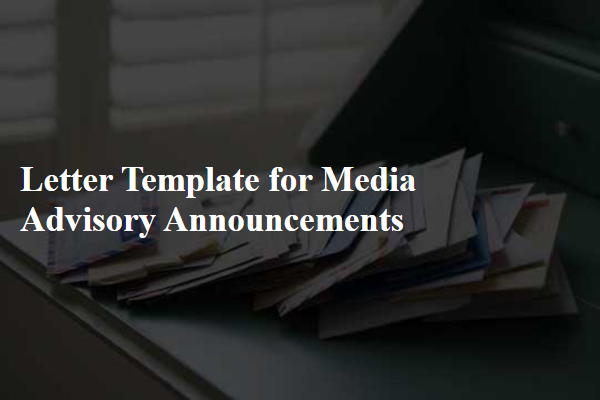
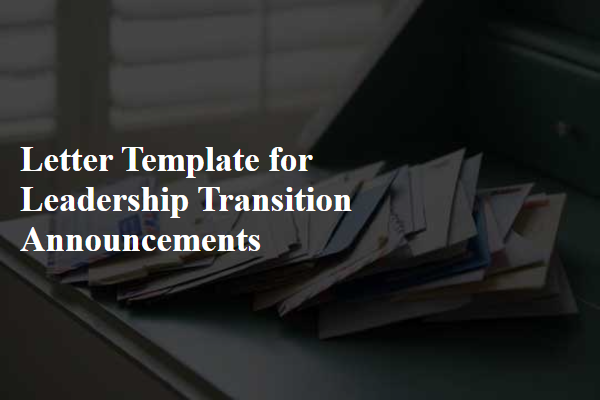
Comments